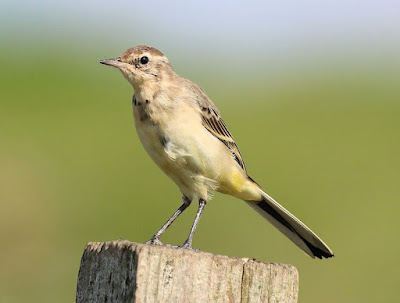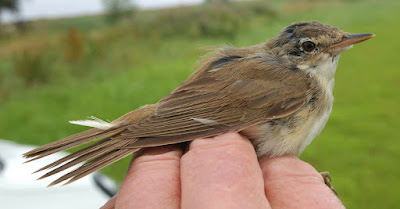ALZ8035, the single Sedge Warbler we caught on 3 August 2024 at Cockerham had been ringed elsewhere. The morning was one of excruciating slowness with just 3 birds trapped. Fortunately ALZ8035 now reminds us that catching even low numbers of birds can produce interesting results.
Birds are such creatures of habit that ALZ8035 was first ringed at Icklesham, Sussex on 1 August 2023, a juvenile of that year, and then recaptured by us almost exactly a year to the day and now an adult.
Sedge Warbler
Icklesham is a coastal migration hot spot where many species migrate from and to France in autumn and spring with April, May and then August/September the peak times when migratory birds cross the English Channel to winter further south.
Sedge Warbler
The Sedge Warbler is a summer visitor to Britain and spends winters in Africa, south of the Sahara Desert, a long journey in both directions.
We are pretty sure that ALZ8035 had not bred at our Cockerham ringing site but almost certainly travelled there from north Morecambe Bay or further afield.
We did not catch this individual either before or after 3 August, nor would we expect to do so, such is the rapid onward migration of Sedge Warblers.
There has been a considerable amount of work done on the feeding ecology of the Sedge Warbler Acrocephalus schoenobaenus as well as on the related Reed Warbler Acrocephalus scirpaceus. Bibby et al (1976) studied the feeding behaviour of Sedge Warblers in Dorset UK prior to migration.
Available food in the places frequented by the birds consisted almost entirely of the reed aphid Hyalopterus pruni, also known as the mealy plum aphid, or plum-reed aphid which frequently occurred in hundreds per leaf or per flower.
Mealy plum aphid on phragmites reed
The weight gains of birds feeding on these aphids varied greatly, both amongst individuals and between years. Many of the birds stayed for very short periods. Most left after just two days.
Bibby & Green (1981) went on to compare the patterns of migration of Reed and Sedge Warblers, both of which migrate between Britain and Africa, to see how food supply distribution might influence migration. Most Sedge Warblers fattened in southern England or northern France, and overflew Iberia, while Reed Warblers paused and fattened in Portugal. The occurrence, duration of stay and rate of weight gain of Sedge Warblers depended on the abundance of Hyalopterus pruni whose seasonality and distribution was broadly sufficient to predict the migration pattern.
Reed Warbler
Reed Warblers showed no similar restrictions of diet, did not respond to aphid abundance and were able to achieve a similar rate of weight gain any time in September or October in Portugal.
Back soon folks. Take care, it's a dangerous world out there.
There's rain for a day or two but Saturday is pencilled in for being outdoors.






































































.jpg)
















